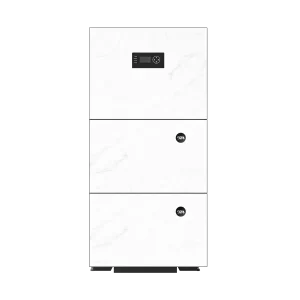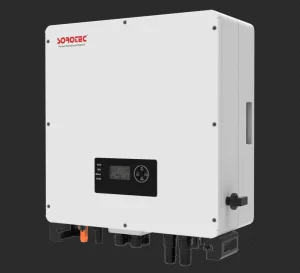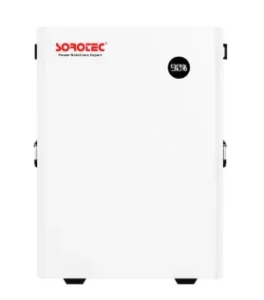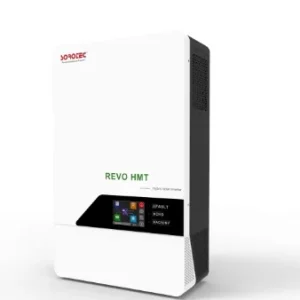Choosing the right power converter ensures reliable energy for homes, offices, or mobile setups. You need to weigh several vital factors. These factors boost performance and efficiency. They also ensure safety and compatibility with your devices. This guide simplifies your decision-making process.
Inverter Types
The type of converter significantly impacts its suitability for specific tasks. Three main types exist: pure sine wave, modified sine wave, and square wave converters.
- Pure Sine Wave Converters: These deliver smooth, reliable power. They’re perfect for sensitive gadgets like laptops or medical equipment. They mimic standard grid electricity. Sorotec’s Pure Sine Wave Inverterexcels here.
- Modified Sine Wave Converters: These are budget-friendly but less efficient. They work for simple devices like fans or lights. However, they may not suit complex electronics.
- Square Wave Converters: These are rarely used today. They’re affordable but only support basic tools with low energy needs.
Evaluate your power needs carefully. This helps you pick the best converter type for your setup.
The converter type is just one factor. Power capacity is another critical aspect.
Power Capacity
Power capacity is a top priority when selecting a converter. Different devices have unique energy demands. You must choose a converter that handles the total load easily. For example:
- A 500W converter powers small devices like phones or LED lights.
- A 1000W converter supports medium devices like TVs or small fridges.
- A 2000W converter runs typical household appliances. It may struggle with high-energy devices like air conditioners.
- A 3000W converter is built for heavy-duty tasks.
A 2000W Inverter suits specific needs. Always pick a converter with capacity exceeding your devices’ combined demand. This ensures smooth operation.
Capacity is key, but efficiency also affects performance and cost.
Efficiency
Efficiency shows how well a converter transforms DC power to AC power. High efficiency reduces energy waste. It leads to better performance and lower costs. Look for converters with efficiency above 90%. This is crucial for frequent or long-term use, especially with renewable energy like solar panels.
Efficiency matters, but safety features are non-negotiable.
Safety
Safety features are essential for any converter. Modern models include protections against overloads, short circuits, overheating, and voltage swings. These safeguards protect your devices. They also prevent risks like fires or shocks. A safe converter gives you peace of mind.
Safety is vital, but extra features add value and convenience.
Other Functions
Many converters offer bonus features to enhance usability:
- LCD Screens: Display real-time data on battery levels, voltage, and load.
- Remote Controls: Allow easy operation from afar.
- Built-in Chargers: Charge batteries while powering devices.
These features make your converter more versatile. They add convenience to your investment. Sorotec’s Solar Inverter integrates with solar systems, ideal for hybrid setups.
Now that we’ve covered key factors, let’s explore what converters do.
What is an Inverter Used For?
Converters are flexible devices with many uses. They transform DC power from batteries or solar panels into AC power. This powers most household appliances. Common uses include:
- Home Backup: Running appliances during outages.
- Off-Grid Systems: Supplying power in remote areas.
- Mobile Setups: Powering devices in RVs or boats.
Knowing these uses helps you choose the right converter.
Inverter Capacity Calculator
To pick the right converter size, use a capacity calculator. This tool adds up the wattage of devices you’ll run at once. A thorough check of your devices’ power needs is crucial. This prevents overloading and ensures smooth performance.
For example:
| Device | Wattage (Approx.) | Quantity | Total Wattage |
| LED Light Bulbs | 10W | 5 | 50W |
| Laptop | 60W | 1 | 60W |
| Refrigerator | 150W | 1 | 150W |
| Television | 100W | 1 | 100W |
| Total | 360W |
A 500W converter would handle this load comfortably.
Capacity calculations lead to questions about converter types.
Is a Pure Sine Wave Inverter the Best?
Pure sine wave converters often stand out. They produce clean, stable power. But is one always the best? It depends on your needs:
- For sensitive electronics needing steady voltage, pure sine wave models are ideal.
- For basic tasks where cost matters more, modified sine wave converters may work.
Consider your devices and budget. This guides your choice.
Converter type and capacity are linked to size considerations.
Consider Inverter Size
Choosing the right converter size ensures it meets your energy needs without overspending. Size should match current and future demands. To evaluate size:
- Calculate total wattage with a capacity calculator.
- Add a 20% safety margin for surges or extra loads.
- Match this to a converter’s rated capacity.
For example, if you need 800W after the margin, choose a 1000W model.
Size and capacity are critical, but so is the battery you pair with your converter.
What Kind of Battery Should I Use with My Inverter?
The battery is as important as the converter. It acts as the energy storage, ensuring steady power. The right battery boosts performance and extends system life.
Types of Batteries
- Lead-Acid Batteries: Affordable and common. They include:
- Flooded Lead-Acid: Need regular upkeep, like adding water.
- Sealed Lead-Acid (SLA): No maintenance, safer design.
- Lithium-Ion Batteries: High energy, long life, and lightweight. Ideal for compact setups.
- Gel Batteries: A type of SLA. Resist extreme temperatures and deep discharges.
Key Factors for Battery Choice
- Capacity (Ah): Determines how long power lasts. Higher capacity suits longer use.
- Voltage Match: Battery voltage must align with the converter (e.g., 12V, 24V).
- Cycle Life: Number of charge-discharge cycles. Lithium-ion lasts longer than lead-acid.
- Charging Speed: Lithium-ion charges faster than lead-acid.
Choose a battery that fits your converter and energy needs. This ensures reliable power.
Battery choice leads to questions about capacity for larger converters.
Characteristics of the Best Inverter
The best converters blend efficiency, reliability, and ease of use. Key traits include:
- Power Capacity: Must meet device demands. For example:
- 500W for small gadgets.
- 1000W for TVs or microwaves.
- 2000W for household appliances.
- 3000W for heavy tasks.
- Efficiency: Above 90% to minimize waste.
- Safety Features: Include overload, short-circuit, and overheating protection.
- Extra Features: Like LCD screens, remote controls, or chargers.
These qualities ensure a converter meets your needs reliably.
With converter traits clear, where can you find top models?
Where to Buy the Best Inverter
Finding a trusted supplier ensures quality and support. Consider these options:
- Authorized Dealers: Offer genuine products with warranties.
- Online Retailers: Provide variety and customer reviews.
- Specialized Manufacturers: Like Sorotec, offering expert advice.
Sorotec leads in power solutions. Their reliable products suit diverse needs. From pure sine wave converters to solar systems, they deliver quality. Explore their range here. Act now to secure your power solution!
Next, let’s compare converters to UPS systems.
What is the Difference Between an Inverter and a UPS?
Converters and UPS systems both provide backup power. However, they differ in function, use, and performance.
Functionality
Converters change DC power from batteries to AC power for appliances. They bridge batteries and devices during outages. They’re great for gadgets like laptops or small appliances.
UPS systems also convert DC to AC. But they add surge protection and instant switching. They provide immediate power, ideal for sensitive equipment like computers or medical devices.
Application
Converters suit homes where a brief delay (milliseconds) is okay. They power fans, lights, fridges, or TVs.
UPS systems are for places where any interruption is critical. Think data centers, hospitals, or offices with vital systems.
Performance
Converters are energy-efficient and cost-effective for long use. They lack the instant response of a UPS. UPS systems offer immediate backup and voltage regulation. But they’re pricier and less efficient over time.
These differences help you choose the right solution.
The comparison raises questions about specific converter capacities.
Is a 2000W Inverter Enough?
A 2000W converter’s suitability depends on your power needs. Assess the total wattage of devices you’ll run together.
Power Requirements
A 2000W converter handles typical household devices:
- Lights, fans, TVs, laptops, and small fridges.
- It may not support high-energy devices like air conditioners or heaters.
Practical Example
| Device | Wattage (Approx.) | Quantity | Total Wattage |
| LED Light Bulbs | 10W | 5 | 50W |
| Laptop | 60W | 1 | 60W |
| Refrigerator | 150W | 1 | 150W |
| Television | 100W | 1 | 100W |
| Total | 360W |
A 2000W converter easily manages this load. It leaves room for more devices.
High-Power Devices
For high-energy appliances:
- Choose a higher-capacity converter.
- Or prioritize which devices run together.
Use a capacity calculator or consult Sorotec here. This ensures the 2000W model fits your needs.
Capacity questions extend to larger converters and their battery needs.
How Many Batteries Can a 3000W Inverter Handle?
A 3000W converter needs a battery bank to meet power demands. The number of batteries depends on voltage, capacity, and usage time.
Voltage Compatibility
Converters specify input voltage, like 12V or 24V:
- A 12V system needs one battery.
- A 24V system requires two batteries in series.
Ensure your battery setup matches the converter’s voltage.
Battery Capacity (Ah)
Capacity determines how long power lasts. For example:
- A 100Ah battery provides one hour at full 3000W load.
- For longer runtime or higher loads:
- Use higher-capacity batteries.
- Connect multiple batteries in parallel, keeping voltage matched.
Practical Calculation
For 3000W over four hours:
- Total energy = 3000W x 4 hours = 12000Wh.
- For 12V batteries: 12000Wh ÷ 12V = 1000Ah.
- Use ten 100Ah batteries in parallel.
- For 24V batteries: 12000Wh ÷ 24V = 500Ah.
- Use five 100Ah batteries.
Sorotec offers expert guidance on battery setups here. Their solutions ensure reliable power for homes or heavy-duty tasks.
Battery and converter choices wrap up our guide.
Conclusion
Selecting a converter means evaluating types, capacity, efficiency, safety, and features. Sorotec, a trusted power solution expert, offers top-quality products. Match your energy and battery needs to ensure steady power for your home, office, or mobile setup. Visit Sorotec now. Take charge of your power needs today!
FAQs:
Q1: Why choose a pure sine wave inverter over a modified sine wave inverter?
A: Pure sine wave inverters churn out smooth, steady juice, perfect for fragile tech—think laptops, medical gear, or appliances with motors. They run cool, hush annoying buzzes, and pamper your gear for a longer haul. Modified sine wave inverters, though kinder to your coin, can jostle fancy devices, sparking heat or hiccups.
Q2: Can I hook up a car battery to a home inverter?
A: You could, but car batteries, made for quick jolts like firing up engines, tire out fast in the long grind of inverter work. Deep-cycle batteries (lead-acid AGM, gel, or lithium-ion) are the real heroes, soaking up repeated drains like a sponge. Just make sure the battery’s voltage (12V or 24V) syncs with your inverter’s vibe.
Q3: How long will a 1000W inverter last on a 100Ah battery?
About 1–2 hours at full blast (1000W), using a 12V battery:
Math: 100Ah × 12V = 1200Wh.
Runtime: 1200Wh ÷ 1000W = 1.2 hours (add a 20% buffer for energy dribbles).
To keep going longer, ease the burden (say, 500W stretches to ~2.4 hours) or grab a beefier battery.










